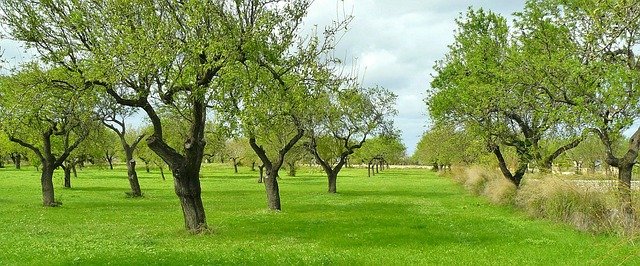Did you know olives trees can live to be more than 1,000 years old? Most olive trees reach the age of 300 to 600 years old. Wouldn’t it be nice to have a beautiful tree that can produce olives for you at home?
Let’s get into our guide then and learn about some general information about olive trees, how to care for them, and some other similar trees.
Olive Tree General information
Olive trees, also known by its scientific name Olea europaea, is a species of small tree in the family Oleaceae. It is native to the norther Mediterranean, primarily parts of Italy and Greece.
The Olive tree is naturally round and frumpy. It grows at a moderate rate and eventually reaches 30 to 50 feet in height. Its leaves have a prominent midvein and are usually less than 2 inches long. They have a medium fine texture.
The Olea europaea grows best in USDA hardiness zones 9-11.
Olives are not vegetables. Olives are fruit because they contain a seed, which can then be used for further propagation of the tree. Olives can be pink, black, brown, purple or green.

Olive Tree Care and Maintenance
Amount of Sun
Olive trees prefer to be grown in full sun. At the very least, it needs six hours of direct sun per day. They thrive in bright, hot, dry areas. Unlike some other plants or trees that can tolerate partial shade, they are not well suited for growing in the shade.
Watering Frequency
Olive trees are drought tolerant. Infrequent, but deep waterings is all that is required. In many climates, the water from rainfall will be enough to allow good growth for the olive tree.
When first establishing an olive tree, the soil does need to remain moist, but not saturated. It will need to be watered weekly for the first year. You can use stick your finger into the soil and if the top 2 inches of the soil is dry, it means that you should water again.
After a water tree is established, deep watering once a month is enough.
Soil
Olive trees grow best in soil with a pH of aroun 6.5, but they are tolerant of alkaline soil. They grow the best in extremely well-draining, rocky soil. This soil should include perlite or small rocks to help it drain better and allow for better aeration to the roots.
If you will be growing in a container, it is best to grow in a clay or wood container. This allows water to drain out. Plastic containers retain more water, which can lead to a lot of problems for olive trees.
Olive Tree Companion plants
Some companion plants that grow well include lavender, thyme, oregano, and bulbs.
Legumes are also excellent companion plants for olive trees. Olive trees demand a lot of nitrogen to efficiently produce nitrogen. Legume crops infuse nitrogen into the soil.

